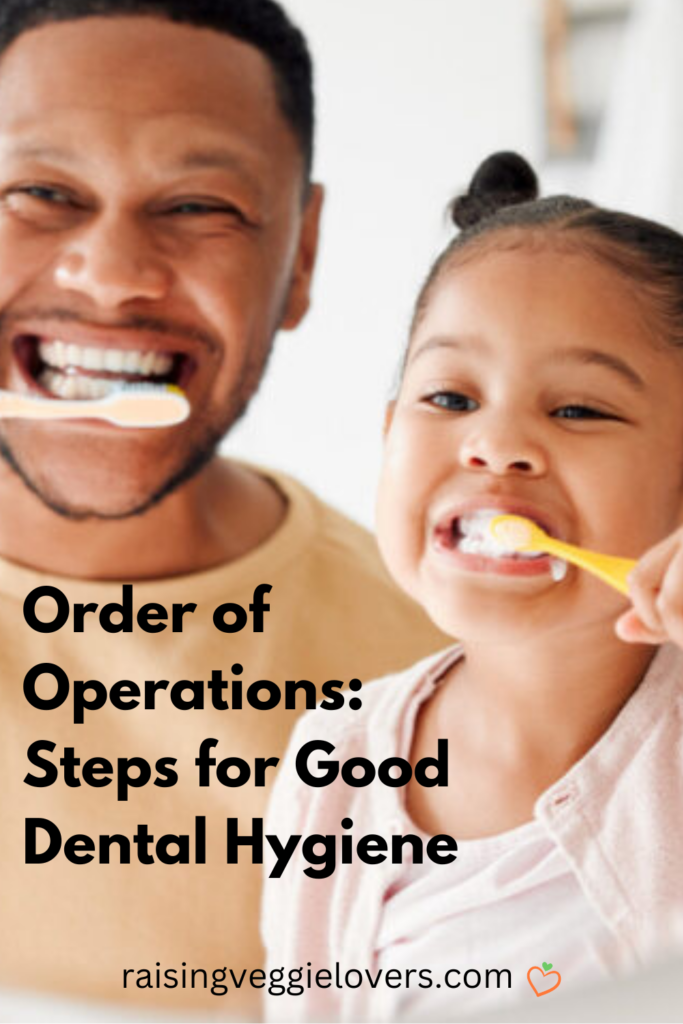
As an Amazon Associate, I earn from qualifying purchases. This post may contain affiliate links. Read my disclosure policy.
Strong and healthy teeth are an essential part of our overall well-being. For parents and families, teaching kids good dental hygiene early is critical to ensuring they maintain healthy habits throughout life. Whether you’re brushing alongside your little ones or setting an example through your own routine, understanding the proper order of operations for good dental hygiene sets the foundation for excellent personal habits and health.
Step 1: Don’t Skip Flossing in the Routine
Flossing is a vital step that often gets overlooked. Brushing alone doesn’t reach the tighter spaces between teeth where food particles and plaque like to hide. By flossing at least once a day, you can prevent gum disease and cavities in these hard-to-reach areas.
For younger children still developing their coordination, floss picks or pre-threaded flossers can simplify flossing. Once they’re older, traditional floss may be a better option as they master the movement of gently sliding the floss between teeth.
Step 2: Brushing the Right Way
The second step in a good dental hygiene routine is properly brushing teeth at least twice a day. For this step to be effective, make sure you and your children use toothpaste your family prefers or as recommended by your dental professional. Brushing for at least two minutes is key to fully removing plaque and debris. Make sure to brush all surfaces of the teeth—front, back, and chewing surfaces—using gentle circular motions to avoid damaging the gums.
Parents with young children should help them brush to make sure they’re practicing the correct technique and not missing those tricky back teeth. For toddlers and preschool-aged kids, a small, soft-bristled toothbrush designed for children works best.
Step 3: Rinse and Refresh
After flossing and brushing, rinsing with an antibacterial mouthwash adds an extra layer of protection. Mouthwash can reach areas in the mouth that brushing may miss, while also freshening breath and reducing odor-causing bacteria. Find a flavor your children will enjoy to encourage routine use.
Always Have the Right Oral Health Products
A well-stocked bathroom can make all the difference to your family’s routine. Essential oral health products, such as your preferred toothpaste, soft-bristled toothbrushes, floss or floss picks, and age-appropriate mouthwash are nonnegotiable.
For younger children, fun or colorful toothbrushes featuring their favorite characters can help make the experience more enjoyable and encourage them to stick to their routine. You might also find electric toothbrushes useful for younger kids as the bristles tend to do all the action.
Teach Children Personal Hygiene Habits
Building lifelong habits starts at home. Teach your children to brush and floss every morning and night as part of their daily routine. Make this time a family activity to strengthen their association of dental care with positive reinforcement. Explain the reasons behind each step—like how removing plaque prevents cavities—so that they understand why it’s important.
And don’t underestimate the power of leading by example. Kids are more likely to follow your routines and habits, so make them good.
By following these steps, you’re setting your family up for a lifetime of healthier smiles. Adopting a daily dental care routine, using must-have oral health products, and teaching valuable personal hygiene habits go a long way in preventing cavities, gum disease, and other related issues. Don’t forget to schedule bi-annual dental appointments for professional cleanings and exams. Happy smiles have the power to change the world!

As always, sharing is caring! Please click on the buttons below to share this post with your friends!
